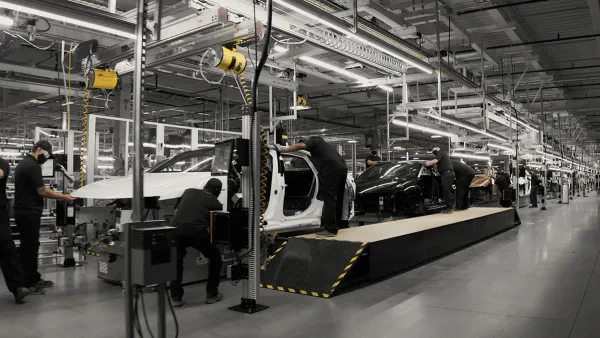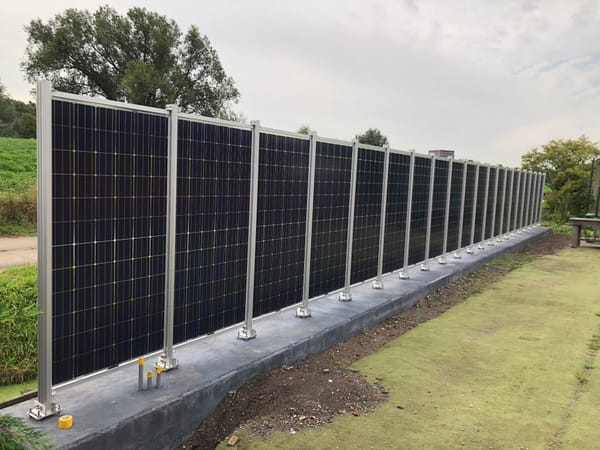The utilities' caps on solar’s growth and the accountants' last word on climate change
Solar power, along with all forms of electricity, is highly regulated and largely captured by utility companies, who often have more state capital lobbyists than anyone else.
Chart of The Week
In 1992, the United States and 153 other nations agreed to the United Nations Framework Convention on Climate Change in Rio de Janeiro, which called for maintaining 1990 greenhouse gas emissions levels by 2000. The U.S. (which rose to 116.5% of 1990 levels by 2000) and most other countries didn’t make the target. Then in 1997, most of the Rio signatories agreed to specific GHG emissions targets by 2020. The U.S. did not ratify the treaty. In 2015, 196 parties signed the Paris Accord, which agreed to limit global warming to 1.5-degrees Centigrade above pre-industrial revolution levels. Then President Donald Trump removed the U.S. from the treaty.
Most recently, in 2021, President Joe Biden pledged to cut GHG levels to half of 2005 levels, by 2030. Judging by current trends, the U.S. is not on track to hit President Biden’s goal (last year the U.S. was at 99% of 1990 levels and 83% of 2005 levels) although his administration argues technology changes are just starting to kick in.
1. Despite its popularity, solar gets pushback from utilities and others
Recently, doing my own research, I learned that Illinois’ community solar developers are limited to energizing 200 megawatts of projects each year. Community solar is hugely popular among consumers, since it tends to be about 10% cheaper than utility provided electricity, developers can build them almost anywhere near transmission lines, such as on cheap, rural land, and because unlike rooftop solar it usually requires no upfront cost, most every consumer can start or stop using it as desired. But talking to developers, I learned that demand for community solar is so high in Illinois, companies practically don’t have to advertise for consumers. And since projects are capped, developers will never reach consumer demand, or need to lower their prices to be competitive.
All this is because solar power, along with all forms of electricity, is highly regulated and largely captured by utility companies, who often have more state capital lobbyists than anyone else. In Illinois, community solar rates were negotiated with the two big utilities, ComEd and Ameren, as part of the Future Energy Jobs Act in 2021. It seems that nobody anticipated community solar to grow as much as it has in Illinois, and now consumers are stuck with state regulated caps that ensure utilities don’t have to react to market pressures.
As solar power’s costs continue to drop (build out and generation costs are now half as much as a new coal plant, and less than a methane gas facility), utility companies are using their capture of state regulators to stall solar projects of all kinds:
- Ohio’s Power Siting Board has blocked over a gigawatt of utility-scale solar projects in the last 12 months.
- Most of Michigan limits solar projects of any kind to serving just 1% of total power consumers.
- New Mexico regulators finally approved 200 megawatts of community solar projects after years of blocking them.
- A major Mojave Desert solar project in Nevada is being opposed on environmental grounds.
Meanwhile, investments in solar power are on course to overtake spending on oil production for the first time.
Source: Wall Street Journal
2. Beware ye the accountants, for they know no bounds
The quietest and most powerful person in any argument is usually the accountant. This is typically because financial numbers don’t lie, and when there isn’t enough money left, people stop listening to lies – like about climate change not being a big deal.
We’ve written in the past here about homeowners’ insurance crises in Louisiana and Florida, where insurers have been defaulting due to the expense of hurricane disaster payouts. Recently Colorado home insurers have started to bail, especially since the 2020 Boulder wildfire that caused $2 billion in damages. Now, last week State Farm, the state’s largest insurer, announced it was no longer accepting new homeowner policy applications in California. Last year, American International Group exited the state.
From one perspective, it’s easy to understand how insurance companies could decide to stop offering policies: the trend line of disaster payouts has been going up, and if you correlate those trends with scientific climate forecasts, there’s evidence that disaster payouts will only get bigger. Ergo, insurance policies aren’t likely to make more money.
Taking a page from the insurance industry, the federal government has begun to weigh the cost of new environmental regulations against the future cost of not enacting those regulations. The White House office that oversees regulations, has adopted a new calculation process that raises the assumed cost of environmental inaction, a radical change from both Democratic and Republican administrations, so that tougher regulations breeze through. There’s legal and accounting heft to these decisions, and it’s tying polluters in knots.
Source: New York Times
Other Things Happened
- The CEO of Verra, the world’s leading carbon credit certifier company, stepped down, months after a Guardian report found the company had been certifying fraudulent credits for big corporations.
- France enacted a ban on short-haul domestic flights that could otherwise be served by a 2.5 hour train ride.
- A great, detailed explainer on how renewables got cheap so fast (solar panels are now 99.6% of their 1970 cost!)
- Japanese car companies are pushing for hydrogen, not EV cars. Japan has the biggest hydrogen build out of any country, but it is struggling to produce green hydrogen.
- More on New Bedford, Mass.’ burgeoning off-shore wind power industry. It’s pretty darn cool.
Congrats on making it to the end! Here’s an Instagram account that’s nothing but unclogging big drains. So satisfying.





